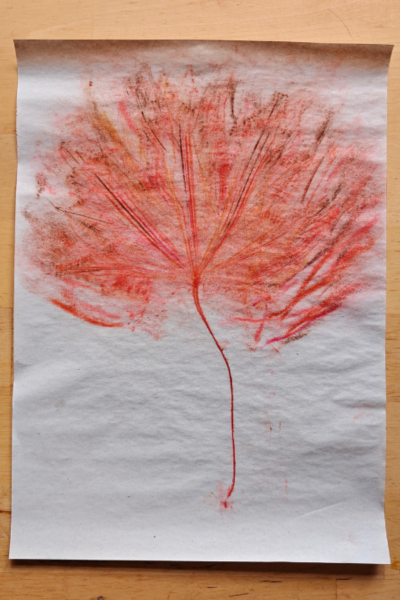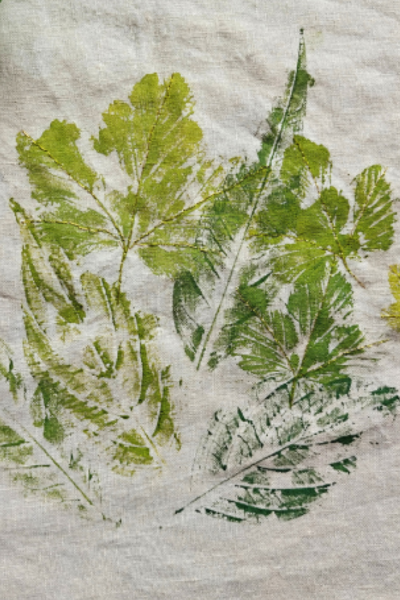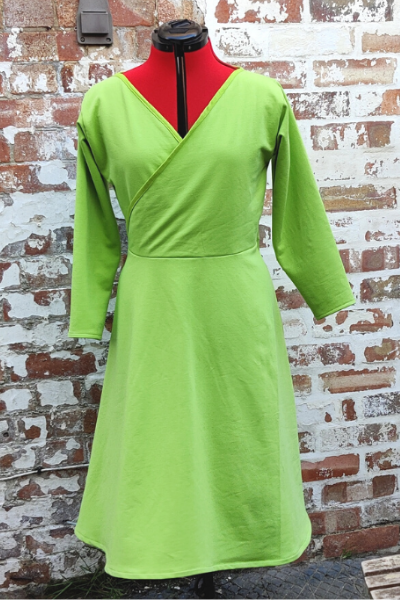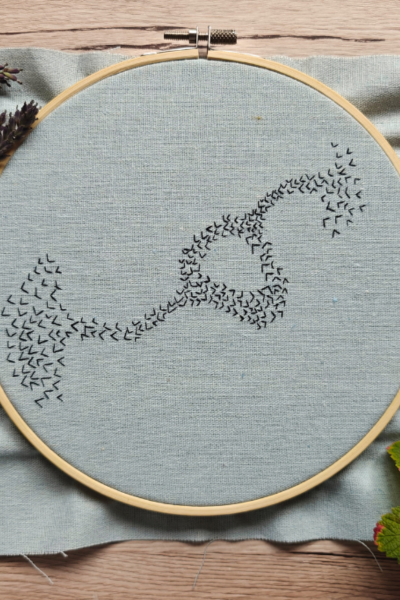Thoughts on Perfectionism

If there’s one thing that stands in the way of being creative more than anything else, it’s perfectionism. That horrible feeling that we’re going to get it wrong so often prevents us from even trying. We worry ourselves into paralysis, to afraid to make the first mark, the first cut, the first stitch.
Even if we do manage to start, so does the horrible little voice in our heads: “You’re going to mess it up,” “You’ll ruin it,” “That looks rubbish,” “You’re wasting paint/ paper/ fabric/ thread,” “You might as well give up,” and all too often, we do. We deny ourselves the chance to try, to learn, to practise, to improve.
Where Does Perfectionism Come From?
So where do the horrible feeling and the nasty little voice come from?
From our earliest days, we are told that mistakes are wrong. There is right and wrong, no grey, and if we are wrong it’s our fault. As children, we may have found ourselves being punished without always being entirely sure why. Few people, whether they are adults or children, deliberately choose wrong, but for children, it’s so often what they hear, even though it probably wasn’t a conscious decision in the first place.
Sometimes we are told that we didn’t try hard enough, and occasionally it’s true. When mistakes happen, or if the outcomes aren’t very good, it’s always possible that it’s because we didn’t make enough of an effort. But it’s not always the case. Things still have the potential to go wrong even when we try our best. And sometimes, other factors can mean that our best might not be as good as somebody else’s best. Practise, being further on, having more time, hiding the messy bits, having support, even getting enough sleep can make a difference to how good somebody’s best is compared to somebody else’s.
Unfortunately, if we are told things enough, we start to believe them. So we believe that mistakes are our fault, that they are bad and we mustn’t make them, that being wrong must be avoided at all costs, our best is never good enough, and even that we must change who we are in order to be good enough.
Perfectionism Versus Reality
It’s a peculiar thing that there is an obsession with perfectionism in all areas life. We carry the weight of the expectation of perfect homes, perfect children and perfect lives.
What makes this obsession peculiar is that if you step out into your garden, park or a country lane, you’ll see plenty of beautiful things that are not perfect! Autumn leaves are a good example. We love their colours and the patterns of the veins, however uneven they are, and the spots, blotches and little tiny holes make them interesting to look at.
What is perfect anyway? Things aren’t supposed to be perfectly symmetrical or identical to the other ones like it. No two leaves are the same. Even the pigeons on the back fence are different to each other. A little while ago, I wrote a post about wabi sabi, and this is exactly what I mean. There’s beauty in things that aren’t perfect.
We get like this about our faces, especially as we get older. We’re told it’s a bad thing to have lines on our faces. Why? Creases around your eyes and mouth show all the times you’ve smiled. If you want perfectly smooth skin in later life, then don’t smile! In fact, don’t move your face muscles at all!
There’s one celebrity in particular I can think of whose face is so perfect he doesn’t look properly human! Not only does he have no wrinkles, his skin looks like he’s made from wax and his teeth are too straight and too white to be natural.
It probably sounds like I’m judging him, and I suppose I am, a bit. But more than that, I feel bad for him, and actually, for all of us. Why are we made to feel bad about our faces? How have we got to this point where it’s alright if you have the money to pay somebody a fortune to make your face look like the face of an alien or of a cyborg pretending to be a human?

What Can We Do About It?
Unfortunately, perfectionism is so deeply ingrained in us it’s very difficult to let go of it. That sicky feeling when we are about to try something and we know that there is a possibility that it might go wrong tends to hang around for a long time even after we’ve decided that we want to let go of it.
As with everything else difficult, tiny steps are often the answer.
Let Go of Expectations of Perfection
Drawing is a good example. I wasted 30 years thinking I couldn’t draw, because I don’t have an innate ability to draw extremely realistic, neat little drawings. This expectation of perfection and the idea that my drawings needed to look a certain way meant that firstly, I thought I couldn’t do it, and secondly, if I needed to, I felt worried and sick and didn’t even want to to try.
But what I’ve found is that if you draw with your non dominant hand, or with your eyes closed, or without taking the pen up off the paper, the expectation of perfection is reduced. Nobody is going to draw something perfectly if their eyes are closed! But what you end up with instead is something much more interesting and expressive.
Treat it Like an Experiment
Another approach is to think about what you are doing as trying something out to see whether or not it works. It might, or it might not.
Having a few ideas of what you could do reduces expectations of perfection even more. For example, sewing zips in is tricky. It gets easier with practice, but it can still go wrong. There are different ways to sew in a zip. So one approach to take could be to try the different ways of sewing in a zip to see which one works best for you and your project, and be willing to try each way more than once. An unpicker is a useful tool, and a zip will withstand being sewn, unpicked and resewn a few times.
Another example is deciding what colours of yarn to use for a crochet project. So something you could do is to crochet some granny squares in different colour combinations to see which ones you like the best.
Start Small
A fear of messing things up can mean that a biggish project that involves lots of steps from start to finish can feel daunting. If a project of that size feels like too much, you could start small instead. This can involve making something small, like a cushion cover rather than a quilt, or something easy. You could use a pattern or a tutorial that you’ve used before, and change one thing, like the kind of fabric or the length or style of the sleeves. Another possibility is to start with an existing thing and make some changes to it, like adding some embroidery to a favourite shirt.
In Conclusion…
It’s very difficult to let go of perfectionism and there is no easy solution. All we can do is tread gently and take baby steps. We can reduce the risks of a project going wrong, see it as an experiment and allow for mistakes. We approach things in a way that means there is no chance of the results being perfect!
Do you want to wear something you’ve made yourself or something that’s perfect?
Do you want to wrap your babies or grandbabies in a blanket that’s perfect or a blanket you’ve made yourself?
Do you want to draw and paint in a way that speaks of what matters to you, or do you want to make perfect neat little drawings that don’t say anything at all?
You might make things that are perfect, and if you, that’s great. But it’s not the point. It’s about who we are, the lives we’ve lived and are living, not how perfectly we can do things.






